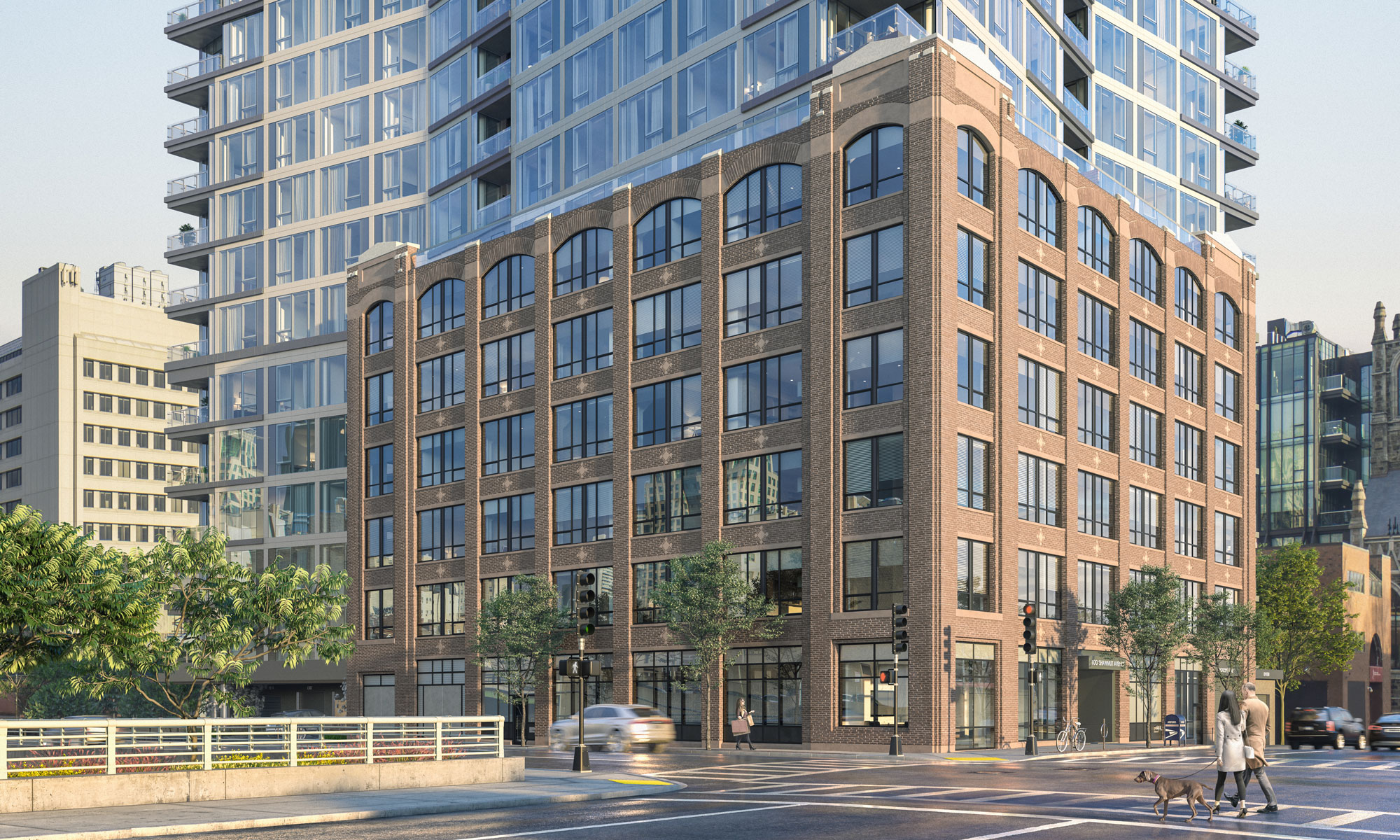
18 Feb 2022 What remains: As the Industrial South End changes, one building proudly links to the past
Tom Palmer has recently researched the history of the historic building at 100 Shawmut Avenue and prepared this story for HBI’s blog.
The new buildings that comprise the South End’s InkBlock are attracting other new buildings to the neighborhood, transforming the former Boston Herald site along I-93 into a neighborhood of new commercial and residential towers. Only one residential building among a total of 10 new ones has retained some of its historic character.
That is 100 Shawmut, where The Davis Companies saved a handsome piece of Boston’s once dominant garment trade, transforming the industrial structure into luxury condominium residences and adding a modern glass tower with added units. In total, 100 Shawmut has 138 home ownership units, most of which are now sold.
The lower third of the building, the brick portion, is where the Arthur H. Freedberg Company made men’s clothing for Jordan Marsh and other stores, and also had a popular outlet store on the site, operating until about 1980. 100 Shawmut was built in about 1915 as a craftsman-style daylit manufacturing warehouse. Freedberg Company was incorporated from 1934 to 2002, according to state records. The trademark was “Freedberg of Boston,” and one filing noted that the company made suits, jackets, skirts and pants.
Freedberg was listed as being at 112 Shawmut Ave. “100-112 Shawmut Street is in excellent condition,” said one assessment, “and is an excellent example of an early, decorated, daylit, concrete-and-steel-framed manufacturing/warehouse building. It is a type unique to this area, and found in abundance in the area.”
Before InkBlock effectively stretched the South End all the way over to the Southeast Expressway, the area was home for decades to industrial use, and before that it was known as the New York Streets neighborhood. The New York Streets are long gone, erased by Urban Renewal in the 1950s.
Seneca, Oneida, Oswego, Genessee, Rochester and Troy — those long streets running east and west between Albany Street and Harrison Avenue were housing for workers and immigrants, five blocks swept away by the same devastating Urban Renewal clearance movement that also took Boston’s West End in the 1950s and 60s. The so-called “New York Streets” covered roughly 24 acres of land and 12+ city blocks in the northeast corner of the South End, and commemorated railroad connections between Boston and Albany as this area in the 1840s.
Also in the new neighborhood today, the former Trinity Catholic Church (1874), once home to a congregation of German immigrants, is now the “Lucas” condominiums, which was adapted for its new use by adding a glass tower to the historic masonry building. The building boom includes non-residential developments that bring a mixed-use dimension to the area, including Biomed Realty’s new tower at 321 Harrison Ave. and 1000 Washington St., the former Teradyne headquarters, which Nordbloom Company is transforming into modern office space.
As this neighborhood continues to change, adaptations like the 100 Shawmut proudly anchor new buildings with reminders of the area’s rich industrial and immigrant history.



